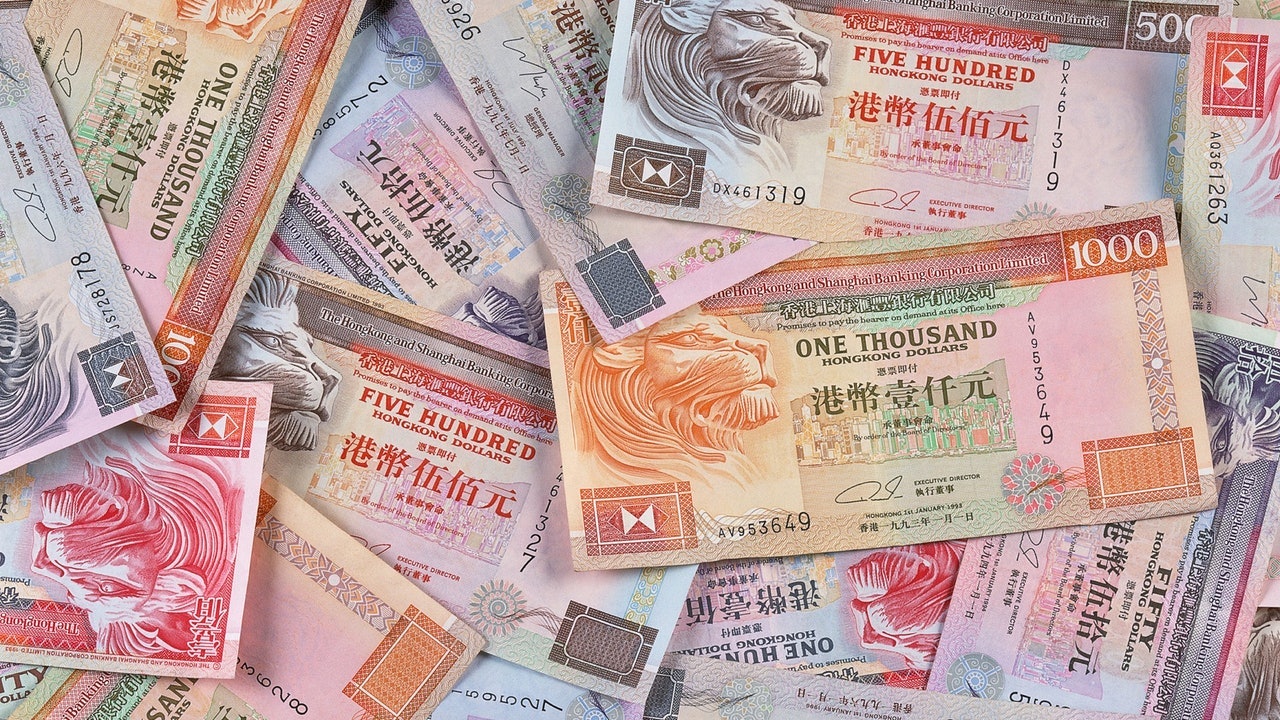Post-Intervention Analysis: Hong Kong Dollar Interest Rate And Its Effect On HKD/USD

Table of Contents
The Hong Kong Monetary Authority (HKMA) and its Intervention Mechanisms
The HKMA plays a pivotal role in maintaining the linked exchange rate system between the HKD and the USD, aiming to keep the HKD within a narrow band of 7.75 to 7.85 HKD per USD. To achieve this stability, the HKMA employs various intervention mechanisms, primarily focused on influencing the supply and demand of USD in the foreign exchange market. These actions are often directly tied to adjustments in Hong Kong's interest rates. The effectiveness of the HKMA's interventions hinges on its ability to manage currency fluctuations and maintain confidence in the peg. The key mechanisms include:
-
Mechanism 1: Buying/selling USD to influence supply and demand: When the HKD weakens towards the upper bound of the band (7.85 HKD/USD), the HKMA buys USD, increasing demand for HKD and thus strengthening it. Conversely, if the HKD strengthens towards the lower bound, the HKMA sells USD, increasing the supply of HKD and weakening it. This direct market intervention is a cornerstone of the linked exchange rate system.
-
Mechanism 2: Adjusting the base rate to align with US interest rates: The HKMA often adjusts its base rate to mirror changes in US interest rates. This helps to maintain interest rate parity and prevent speculative attacks on the HKD. By aligning rates, the HKMA discourages capital flows that could destabilize the HKD/USD exchange rate.
-
Mechanism 3: Using the Exchange Fund to manage currency fluctuations: The HKMA utilizes its substantial Exchange Fund reserves to conduct its interventions. The size and strength of this fund are critical to the HKMA’s ability to effectively manage periods of high volatility in the foreign exchange market.
Impact of Interest Rate Hikes on HKD/USD
An increase in Hong Kong's interest rates generally leads to capital inflows. Higher interest rates make HKD-denominated assets more attractive to international investors seeking higher returns. This increased demand for HKD strengthens the currency relative to the USD. Let's examine the potential outcomes:
-
Increased demand for HKD due to higher returns: Higher interest rates incentivize investors to park their funds in Hong Kong, boosting demand for the HKD.
-
Appreciation of HKD relative to USD: The increased demand for HKD leads to its appreciation against the USD, resulting in a lower HKD/USD exchange rate.
-
Potential for reduced volatility in the HKD/USD exchange rate: While not guaranteed, the increased stability brought about by capital inflows can contribute to reduced volatility in the HKD/USD exchange rate, though this is highly dependent on other global market factors.
Impact of Interest Rate Cuts on HKD/USD
Conversely, a decrease in Hong Kong's interest rates can trigger capital outflows. Lower interest rates make HKD-denominated assets less attractive, encouraging investors to move their funds to markets offering better returns. This leads to a decrease in demand for HKD, weakening the currency against the USD. Consider the following consequences:
-
Reduced demand for HKD, leading to capital flight: Lower interest rates make HKD less appealing to investors, potentially leading to capital flight.
-
Depreciation of HKD against USD: The reduced demand for HKD results in its depreciation against the USD, causing the HKD/USD exchange rate to rise.
-
Increased volatility in the HKD/USD exchange rate: The outflow of capital can increase volatility in the HKD/USD exchange rate, potentially making it more susceptible to speculative attacks.
Analyzing Post-Intervention Data and Trends
Analyzing historical data is crucial for understanding the correlation between interest rate changes and subsequent movements in the HKD/USD exchange rate. Various analytical methods can be employed:
-
Reviewing past HKMA interventions and their effects: Examining past interventions, their timing, and their impact on the HKD/USD exchange rate provides valuable insights into the effectiveness of different strategies.
-
Using statistical methods to identify patterns and correlations: Regression analysis and time series analysis can be used to identify statistical relationships between interest rate adjustments and HKD/USD fluctuations.
-
Considering external factors influencing the HKD/USD exchange rate: It's essential to acknowledge that external factors, such as global economic conditions and geopolitical events, can significantly influence the HKD/USD exchange rate, irrespective of HKMA interventions. A comprehensive analysis needs to account for these external variables.
Conclusion: Understanding Post-Intervention Analysis of Hong Kong Dollar Interest Rate and its Effect on HKD/USD
In conclusion, understanding the Post-Intervention Analysis: Hong Kong Dollar Interest Rate and its Effect on HKD/USD is vital for navigating the complexities of the HKD/USD exchange rate. The HKMA's interventions, primarily through interest rate adjustments and direct market operations, significantly influence the HKD's value against the USD. While interest rate hikes generally strengthen the HKD, cuts tend to weaken it, although the actual impact is always contingent on a multitude of economic and geopolitical factors. Further research and ongoing monitoring of interest rate changes and their correlation with HKD/USD fluctuations are crucial for informed decision-making. We encourage you to conduct your own post-intervention analysis of Hong Kong dollar interest rates and their impact on the HKD/USD exchange rate, using this article as a foundation and supplementing your research with data from sources like the HKMA website and reputable financial news outlets. [Link to relevant data sources]

Featured Posts
-
 Champions League Semi Final Barcelona And Inter Milans Explosive 6 Goal Encounter
May 08, 2025
Champions League Semi Final Barcelona And Inter Milans Explosive 6 Goal Encounter
May 08, 2025 -
 Thunder Vs Trail Blazers Game Time Tv Schedule And Streaming Options March 7th
May 08, 2025
Thunder Vs Trail Blazers Game Time Tv Schedule And Streaming Options March 7th
May 08, 2025 -
 Anchor Brewing Shuttering What Happens Next For The Iconic Brewery
May 08, 2025
Anchor Brewing Shuttering What Happens Next For The Iconic Brewery
May 08, 2025 -
 Todays Weather Partly Cloudy With A Chance Of
May 08, 2025
Todays Weather Partly Cloudy With A Chance Of
May 08, 2025 -
 Kashmir And The India Pakistan Dispute Understanding The Roots Of Conflict And The Potential For War
May 08, 2025
Kashmir And The India Pakistan Dispute Understanding The Roots Of Conflict And The Potential For War
May 08, 2025
